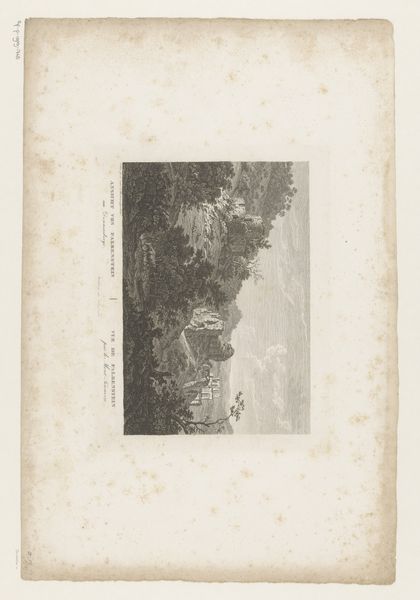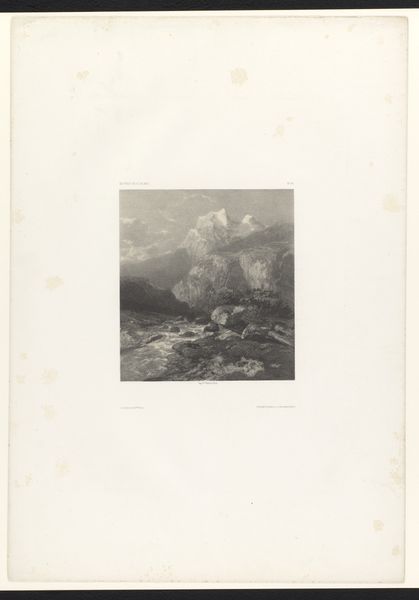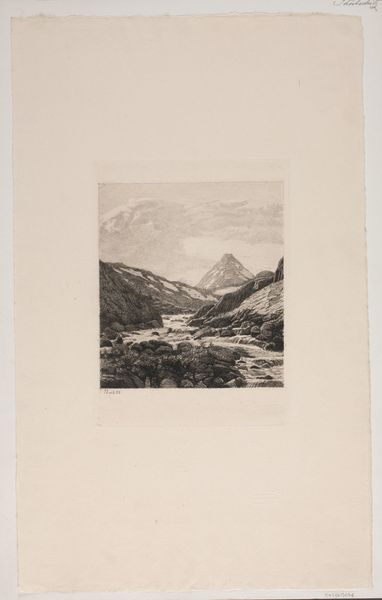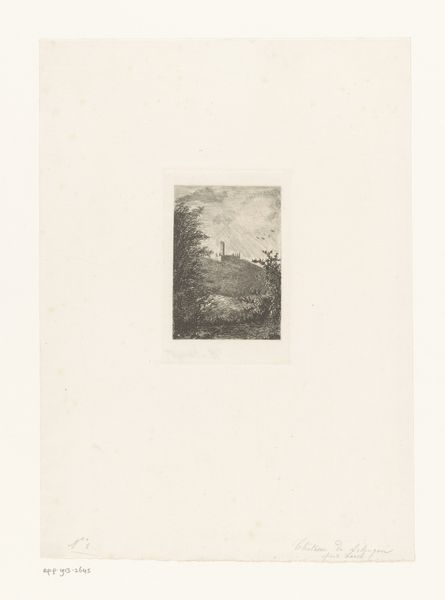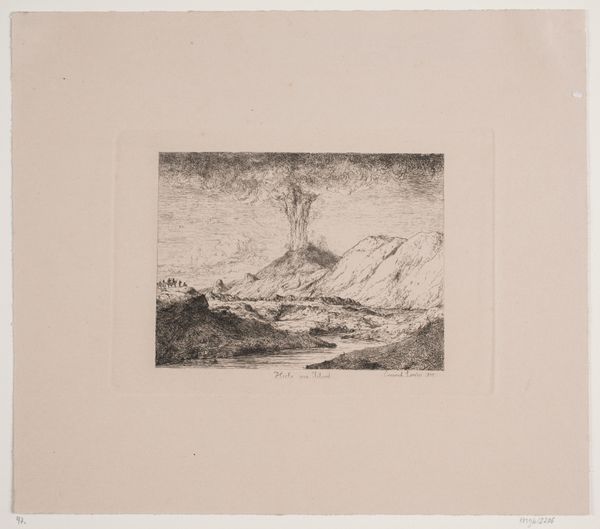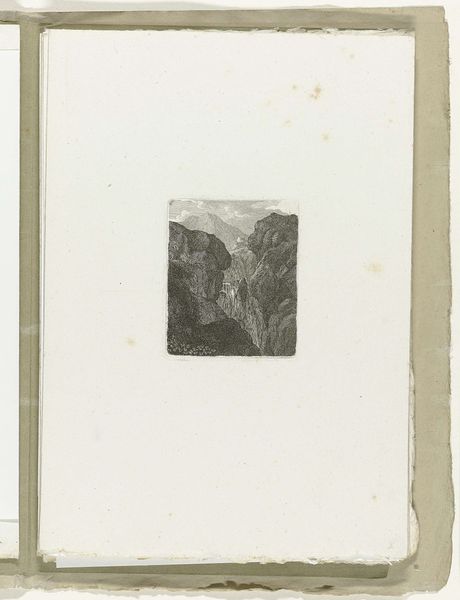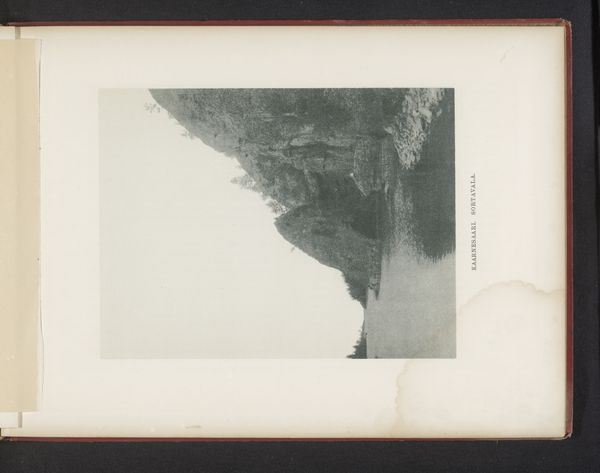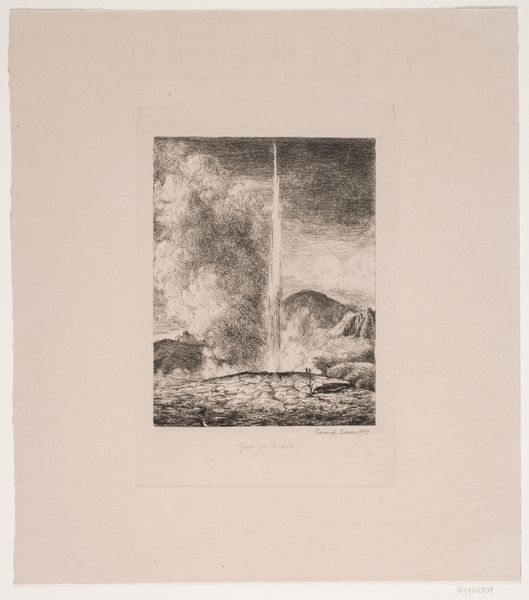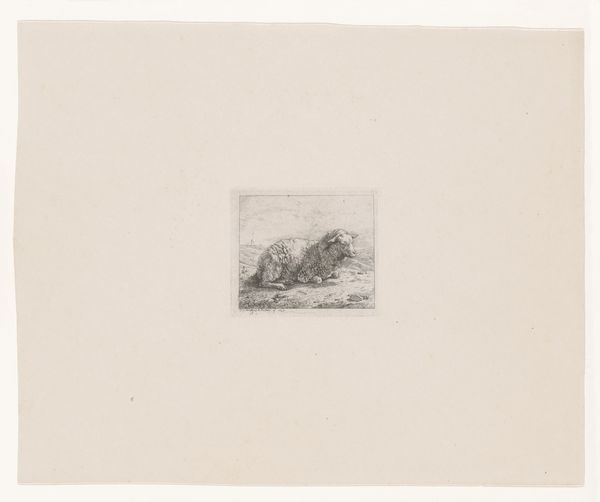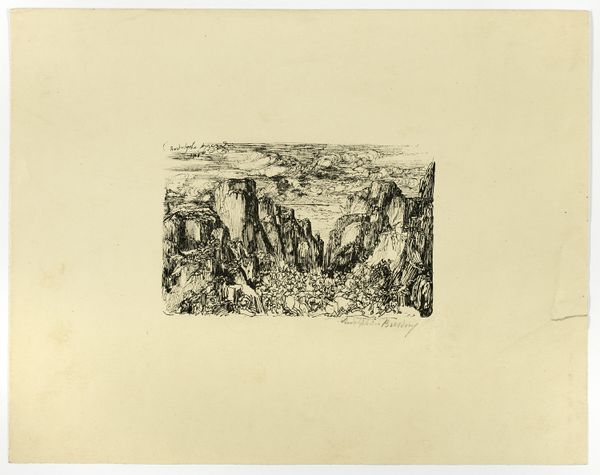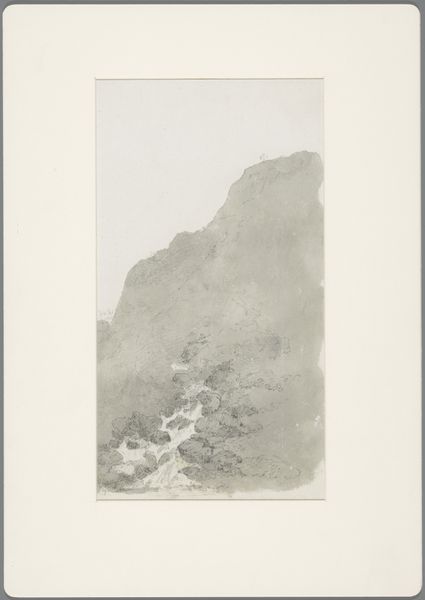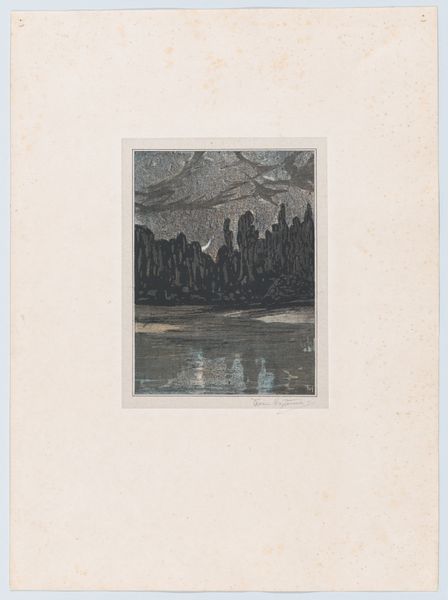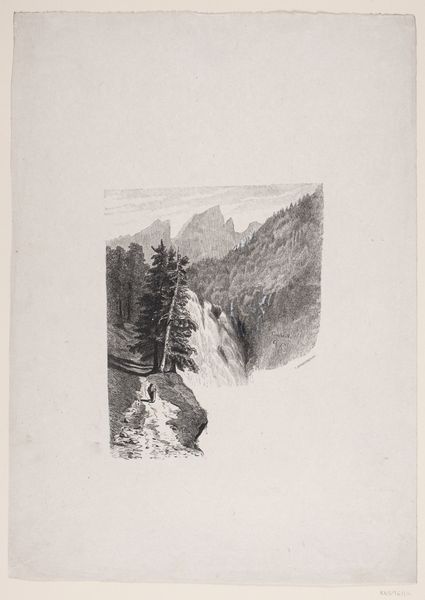
print, woodcut, wood-engraving, engraving
# print
#
landscape
#
woodcut
#
united-states
#
wood-engraving
#
engraving
Dimensions: 4 1/2 x 4 3/8 in. (11.43 x 11.11 cm) (image)12 1/4 x 9 11/16 in. (31.12 x 24.61 cm) (sheet)
Copyright: Public Domain
Curator: "Illustration -The Castle-" by William B. Closson, dating from around the 19th century. The work before us is a wood engraving and woodcut. Editor: The first thing that hits me is its quiet drama. A distant, craggy castle presides over the scene. A hint of medieval magic maybe, something akin to an old fairytale book. Curator: Well, consider the production of these engravings, prints and woodcuts were hugely popular and economically accessible, meaning this medieval drama wasn’t just for the elite. The detail involved demanded serious craftmanship, each tiny line carved out physically reverses ideas of mass production we tend to consider now. Editor: I see that. It's small, intimate, and clearly the result of skilled labour, not cold machine-work. Almost like a miniaturized painting. How different is that than someone churning out prints for propaganda? The difference, I'd argue, lies in the intent and artistic application. The choice of scene and fine application speak to a slower process. Curator: Precisely. There's a careful relationship to nature at play, but also a careful engagement with distribution and the commercial needs. Landscape images had cultural caché, while these castle scenes spoke to certain narratives about society and order, appealing directly to bourgeois consumers of the time. Editor: But even beyond social and economic function, it seems almost aspirational. It invites the viewer to dream, to escape into that meticulously crafted scene. In some ways that tension between the escapism you mention and a critique of the labor speaks volumes. There is that distant dream, that unreachable tower, set in direct opposition to what it means to make it in this life. Curator: Exactly. We can trace the ways Closson navigated different values and realities. His commercial needs versus artistic vision in making such a popular, romantic landscape print speaks to the complexities within 19th century printmaking. Editor: I'll carry that sentiment of material struggle as an interpretive framework moving forward in other artwork from this period. Curator: It's fascinating how a seemingly straightforward landscape print can become a window into larger economic and cultural trends through close investigation and perspective.
Comments
No comments
Be the first to comment and join the conversation on the ultimate creative platform.
